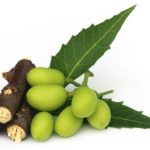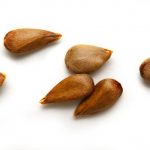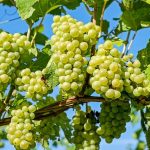The search for new seed oils is an imperative given that many sources of dietary oil are diverted into other uses such as fuels or intermediates for other products. Dietary seed oils are extremely important because a number of lipids are ‘essential’ – they cannot be synthesised in the body and must be ingested. One tree plant, named as Buah Perah or pogoh nut, Pareh, Parah, (Malaysia), Kedui or tapos (Indonesia), or look-kra or just Pra (Thailand) (Hamidah et al., 2011) or more scientifically, Elateriospermum tapos (family: Euphorbiaceae) can provide some of this important dietary componentry such as the omega-3 fatty acid, α-linolenic acid (ALA) (Lim, 2012). The single species in this genus is found from Thailand to Malaysia which makes it a useful source for cultivation and harvesting in this region of the world.
The oil is pressed from the seed and has been used mainly for cooking or for lighting. The majority of the fatty acids are oleic acid (34.5%), linoleic acid (31.8%) and α-linolenic acid (ALA, 16.1%) which were identified by gas chromatography (Ling et al., 2006; Yong and Salimon, 2006) following a study of the nutritive potential of the seeds. It has a high content of unsaturated fatty acids which compares with standards such as corn oil and cottonseed oil. The lipid content is 39% which compares favourably with date seed oil.
The seed also produces a valuable flour (Choonhahirun, 2010) which is composed of 16.1% protein, 25.4%carbohydrate and 36.5% fat or lipid. The presence of amygdalin was reported which might be removed by cooking or fermentation It could prove to be a useful resource if extraction and purification methods can be further improved and adapted.
References
Choonhahirun, A. (2010) Proximate composition and functional properties of pra (Elateriospermun tapos Blume) seed flour. Afr. J. Biotechnol., 9(36) pp. 5946-5949
Hamidah, S., Yian, L.N., Mohd, A. (2011) Comparison of Physico-Chemical Properties And Fatty Acid Compostion of Elateriospermum Tapos (Buah Perah), Palm Oil And Soybean Oil. World Acad. Sci., Eng., Technol. 57 pp. 855-858
Lim, T.K. (2012) Elateriospermum tapos. In: Edible Medicinal And Non-Medicinal Plants. Springer-Verlag. pp. 472-475
Ling, S.K., Fukumori, S., Tomii, K., Tanaka, T., Kouno, I. (2006). Isolation, purification and identification of chemical constituents from Elateriospermum tapos. J. Trop. For. Sci. 18 pp. 81-85.
Yong, Y.O., Salimon, J. (2006). Characteristics of Elateriospermum tapos seed oil as a new source of oilseed. Ind. Crops Prod. 24 pp. 146-151.



Hi, I would like to ask if you have more studies about this perah oil about its antioxidant activity?
Hi, I am interested to know more about perah seed.
I have tried to search for some journals about perah seed regarding its antioxidant activity but did not really can find the relevant information about this.
May I know if you have any of the related information?
Hi Chin Ming,
Do you just want a reference list or some of the articles relating to antioxidant activity ? I’m sure I can provide these.
best regards
Alastair
I believe it makes a very good mix with grape seed oil.